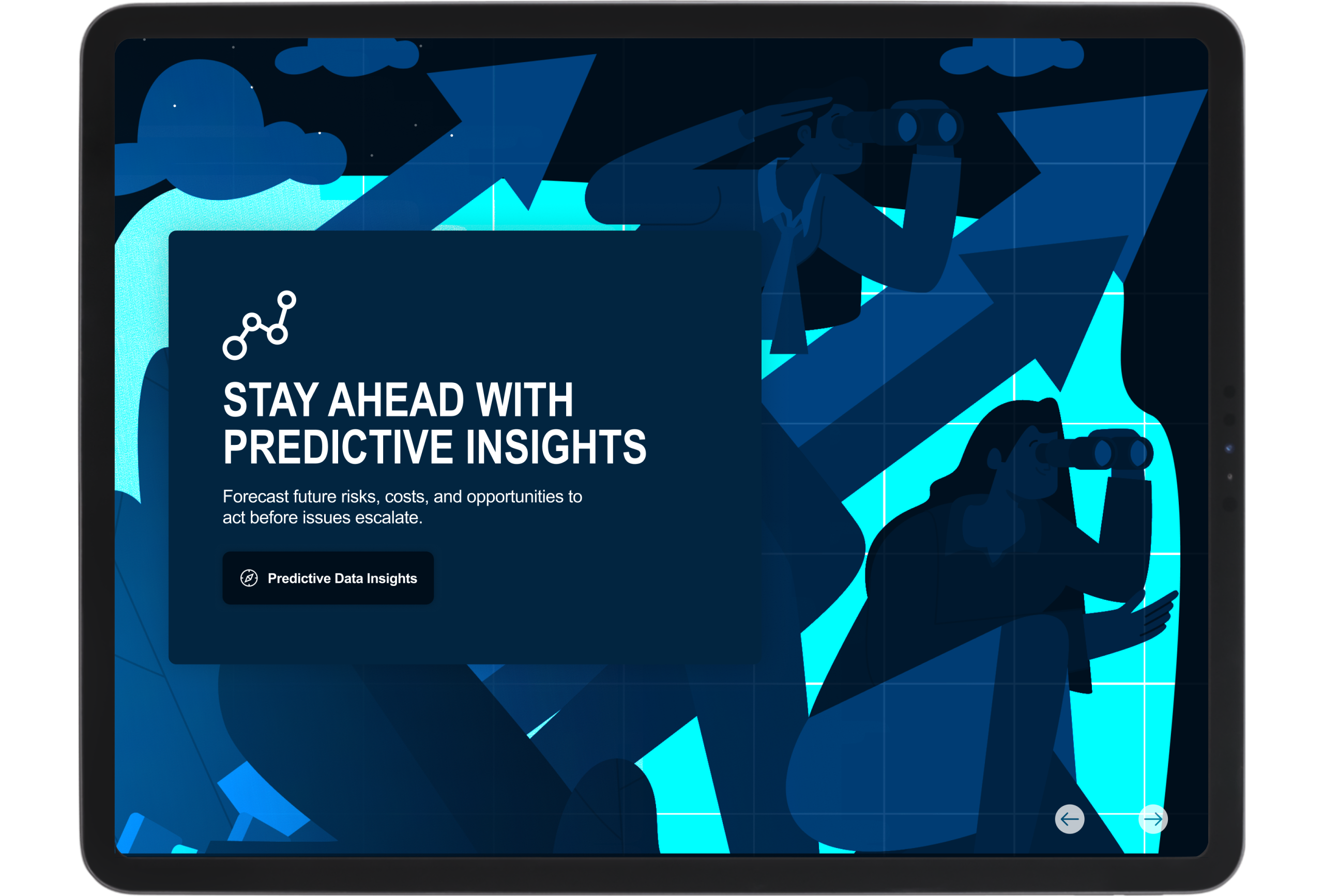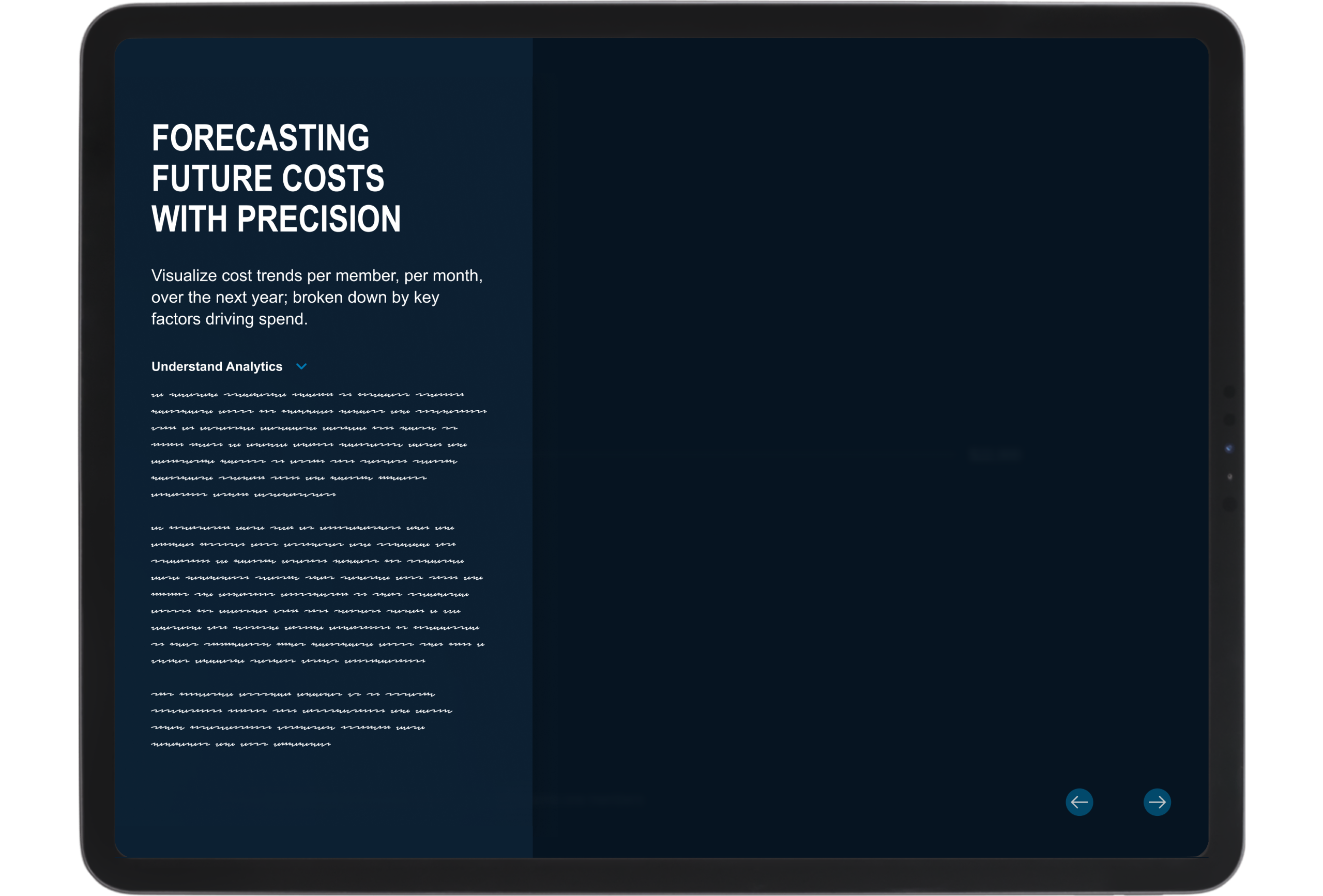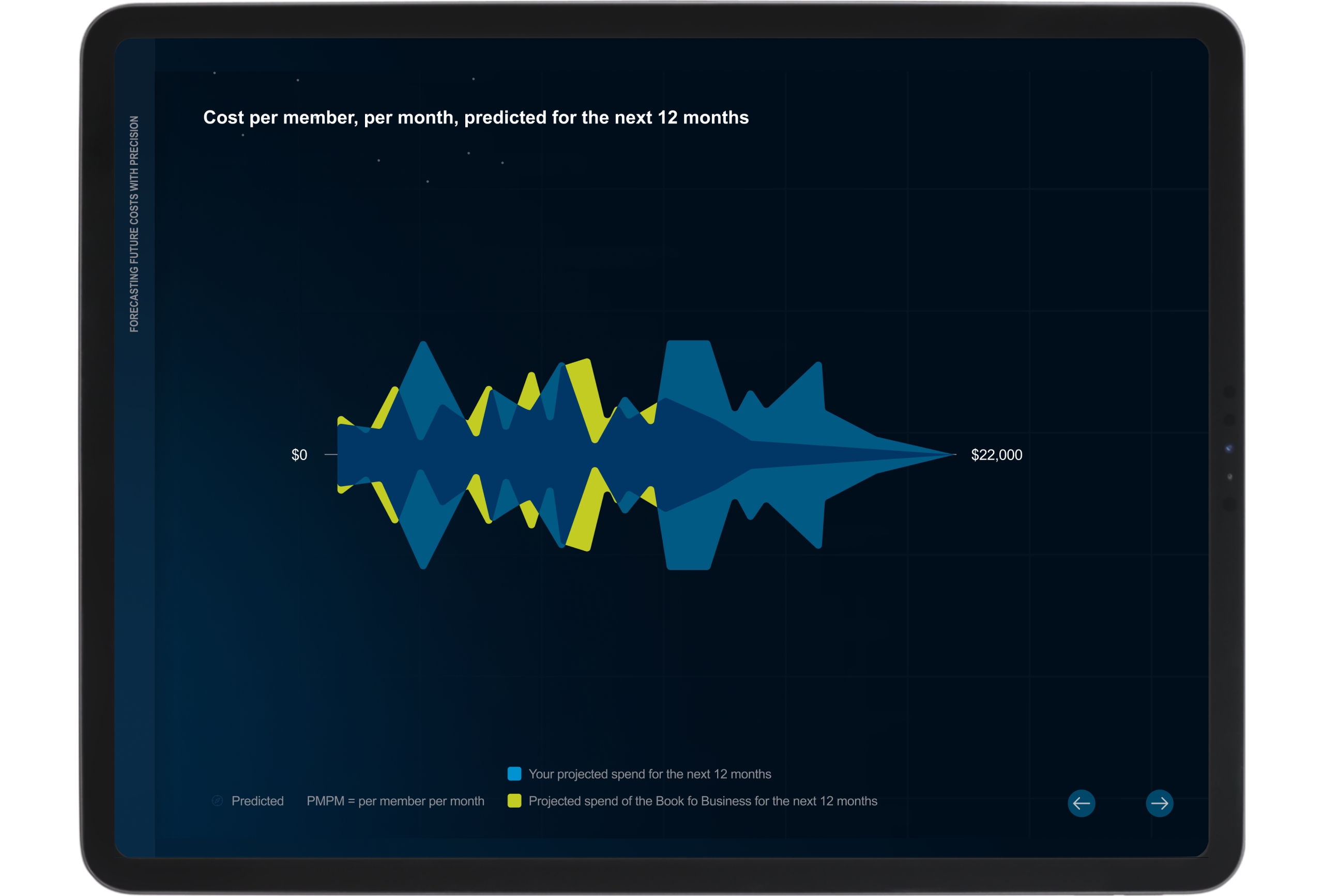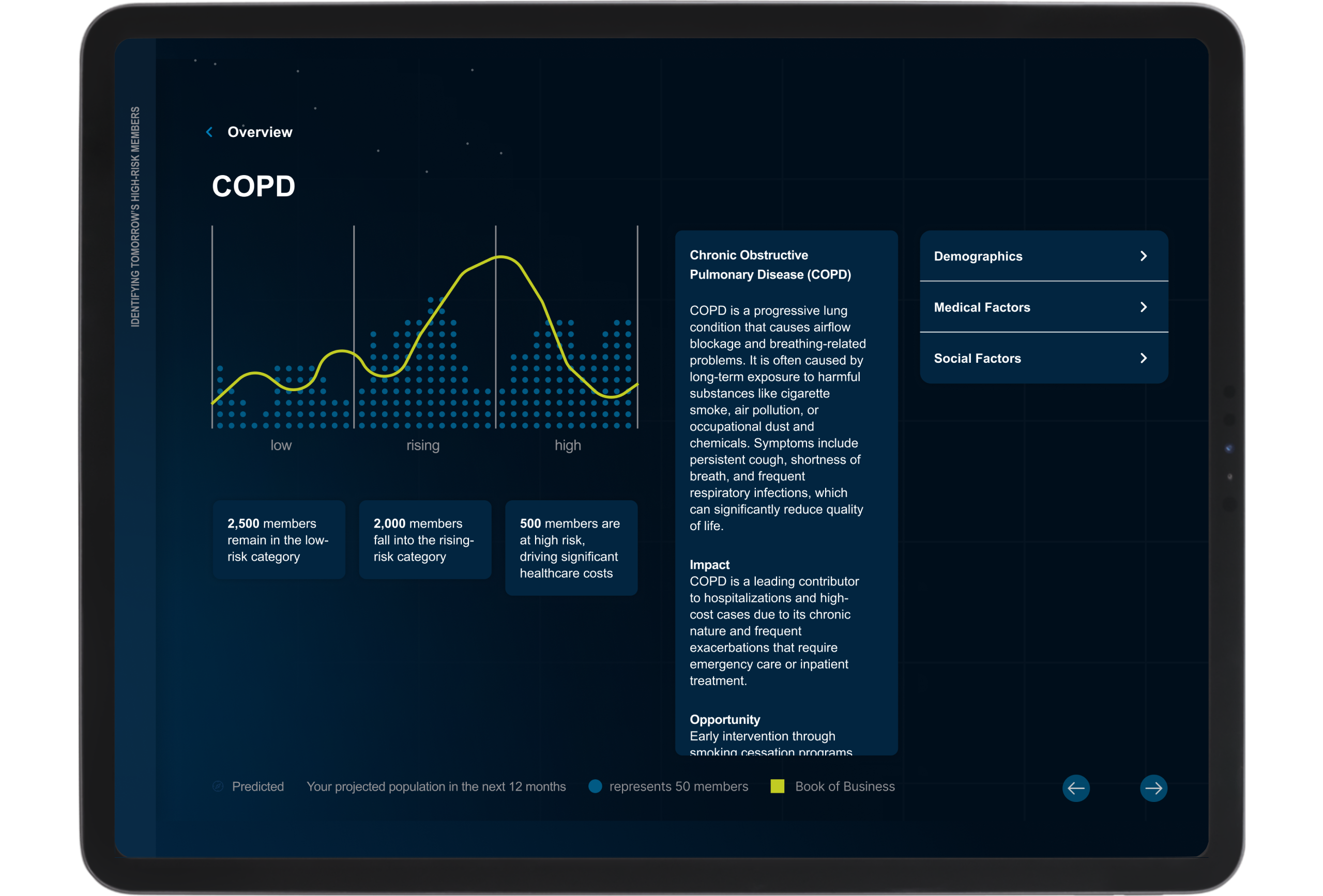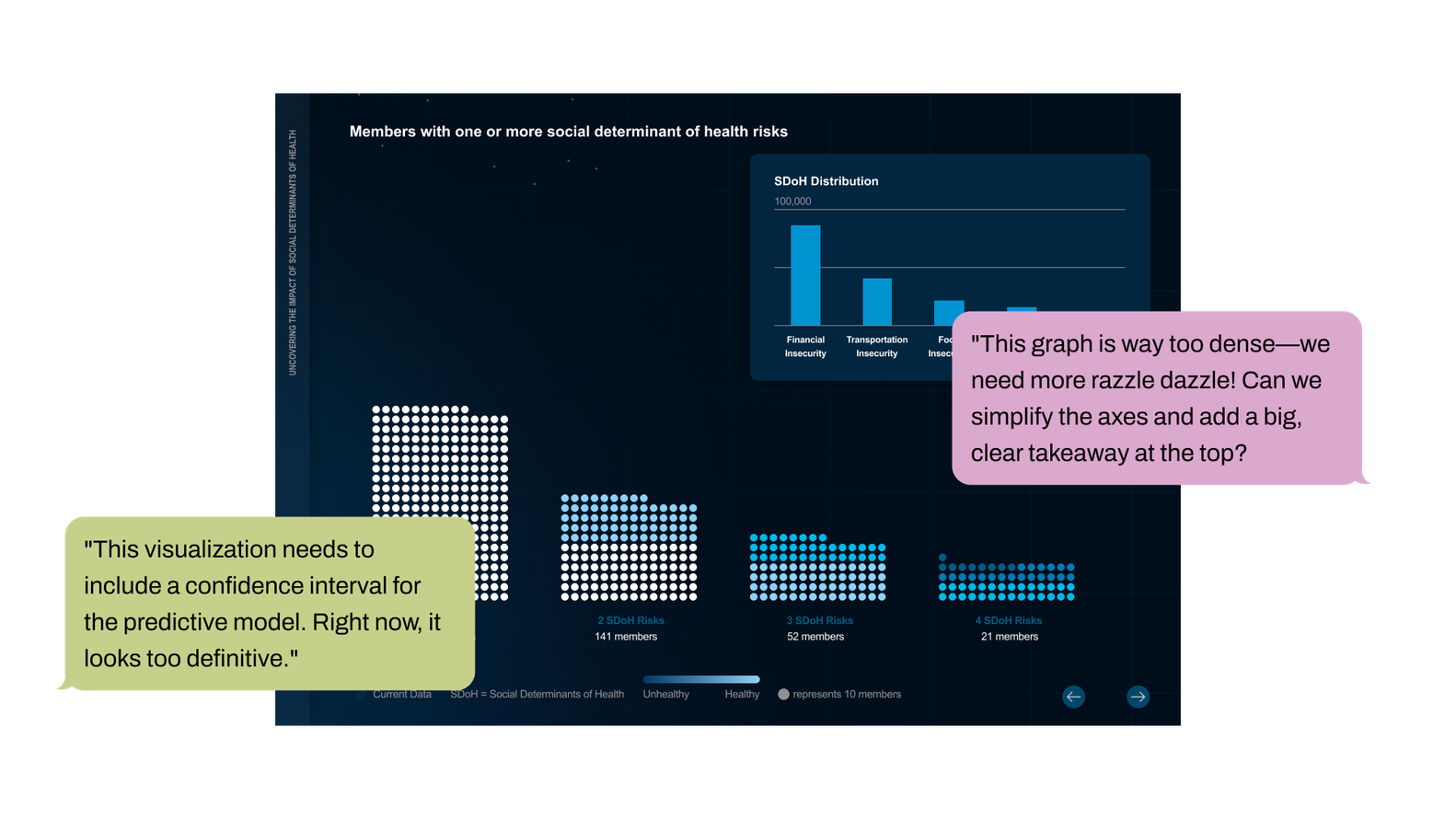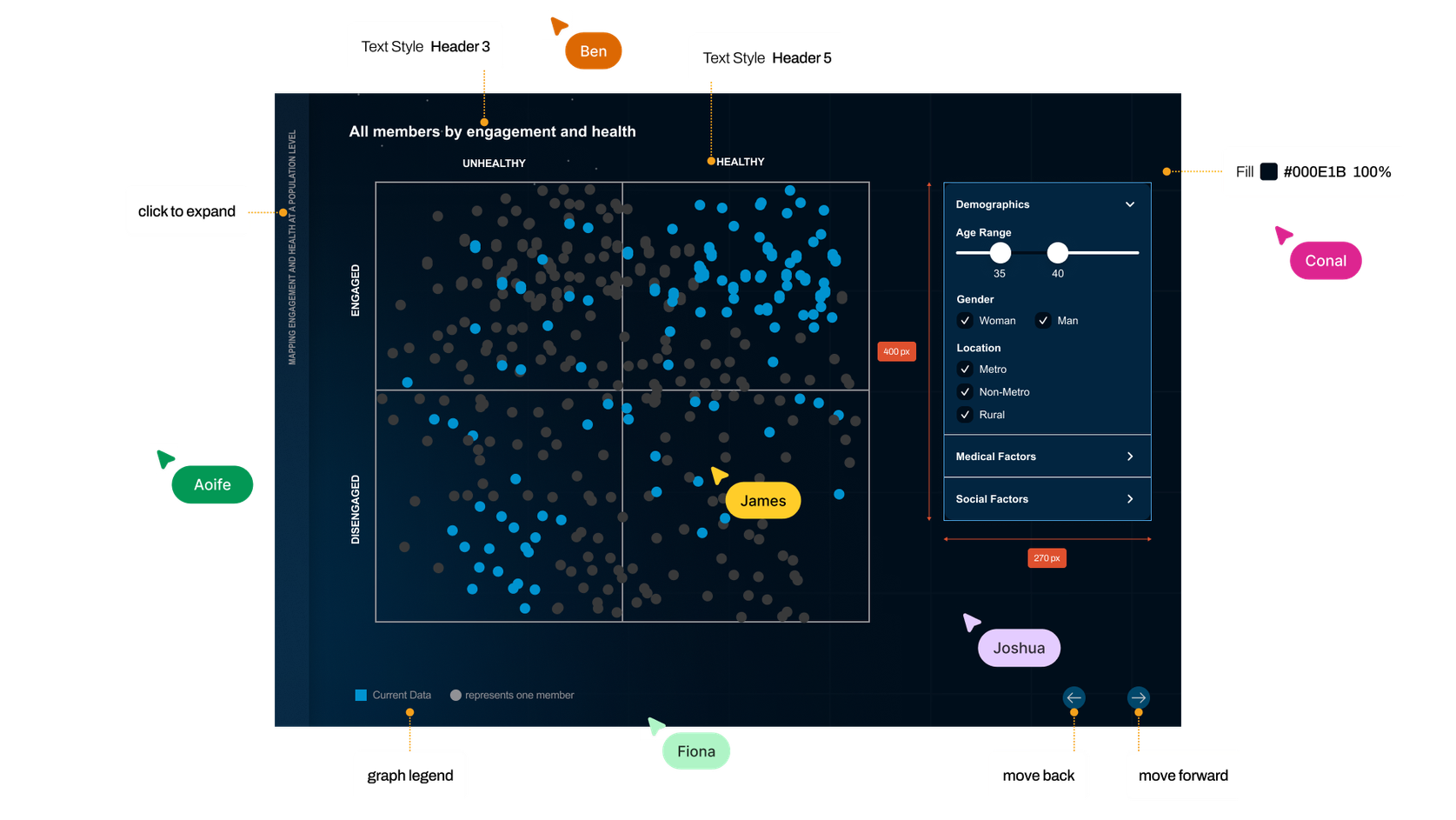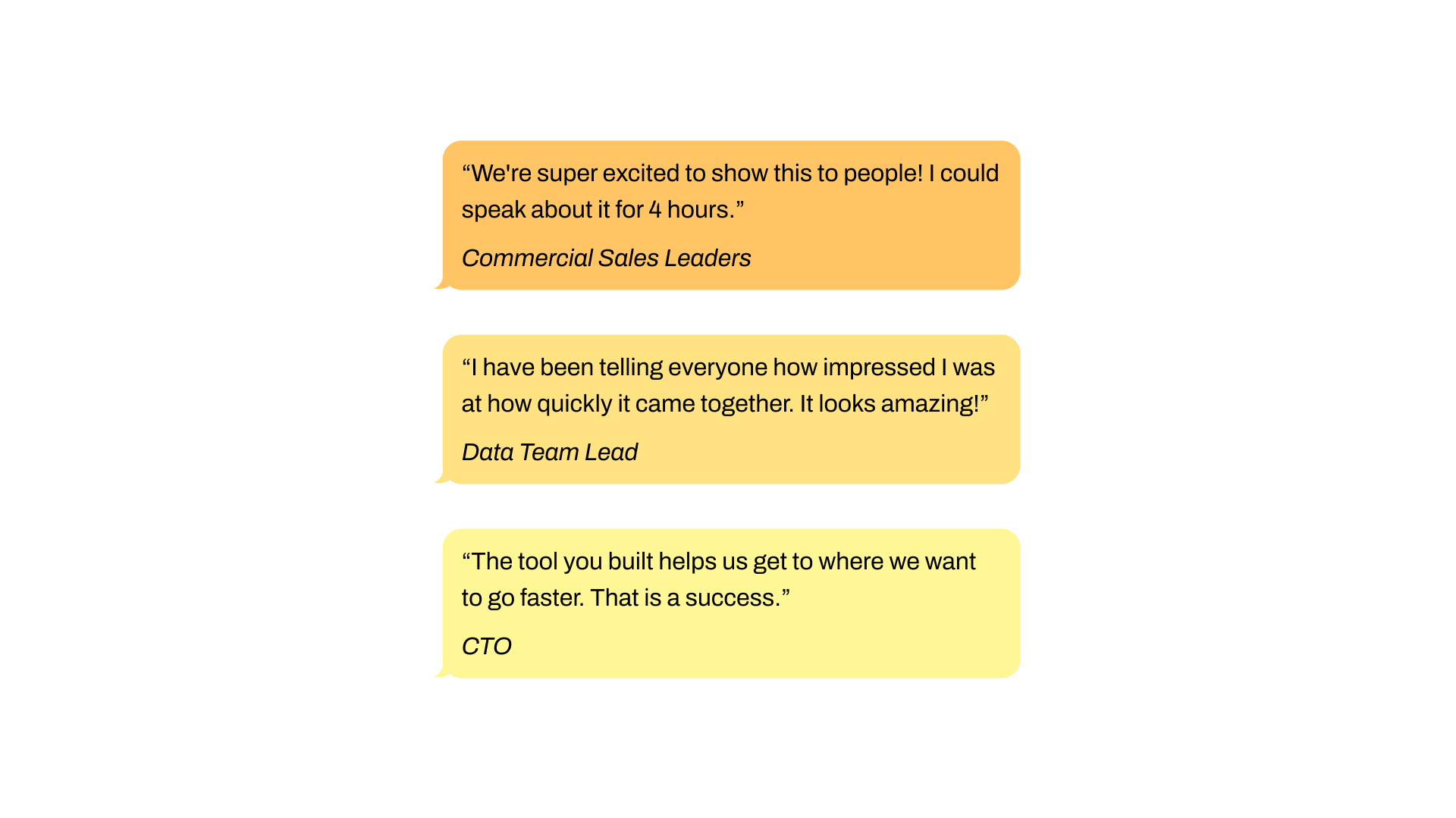decoding healthcare
A digital product that showcases complex healthcare analytics & data in an understandable way
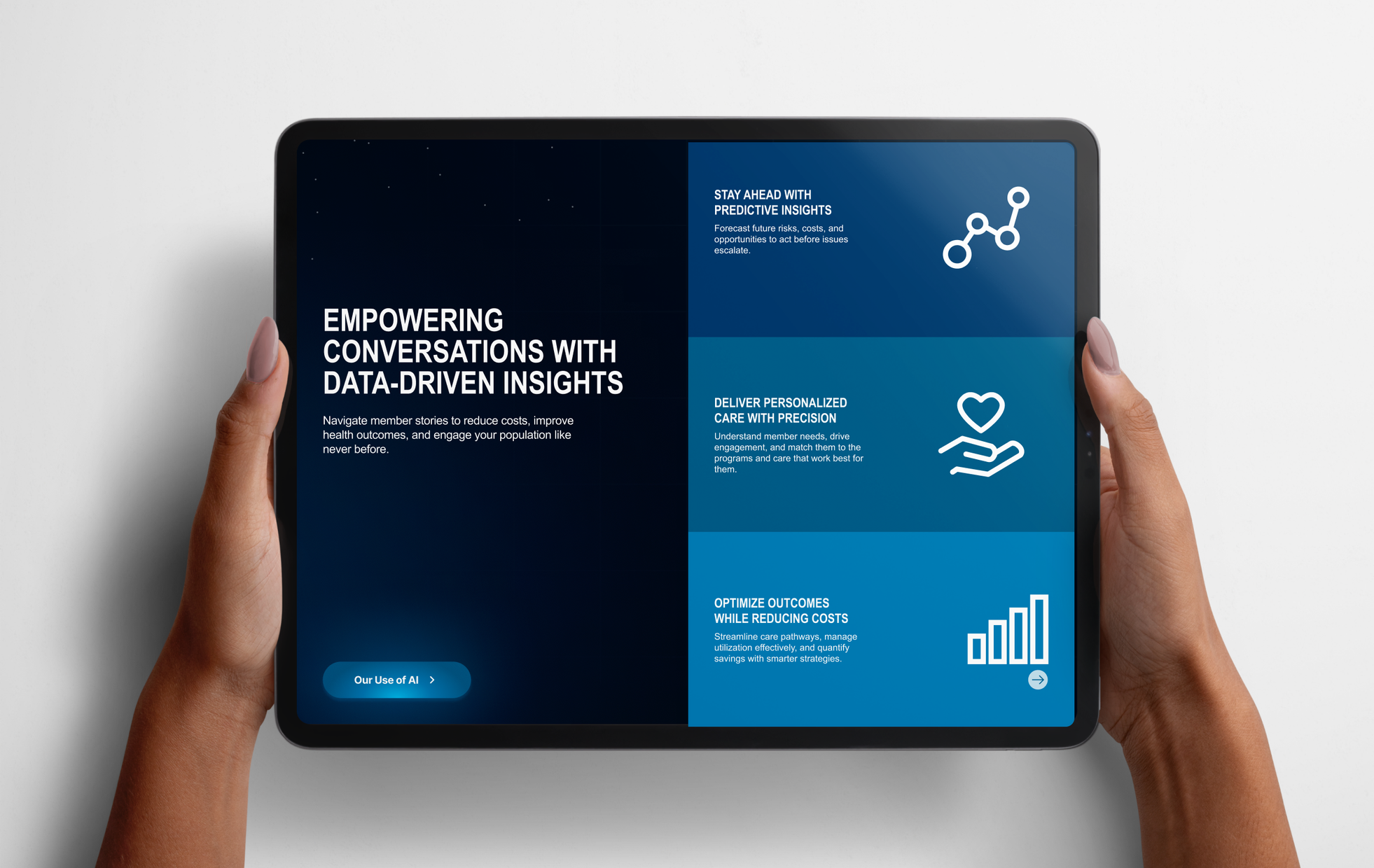
Goal
Create a data-driven, interactive tool that turns complex healthcare analytics into clear, tangible insights — helping businesses and decision-makers understand, act on, and trust their data.
Context
Client Project at The Dock
Winter 2024
Starting Point
In healthcare, data is abundant, but understanding it is a challenge. The business wanted to showcase its analytics capabilities in a way that spoke to both data professionals and business leaders — translating raw numbers into insights that drive action.
The challenge
- Make complex healthcare data intuitive — so stakeholders at all levels can easily engage with the insights.
- Showcase real-world impact — turning predictive models into clear, compelling narratives that highlight risks, costs, and opportunities.
Our approach was not just about displaying data, but about making it tangible, relevant, and understandable — so that people could see what it means, why it matters, and what to do next.
Outcome
Making data actionable means making it understandable. This project was about more than just visualizing analytics — it was about turning healthcare data into a decision-making tool that speaks to everyone.
By combining design, data storytelling, and tech we transformed complex numbers into clear, compelling insights — helping businesses and stakeholders not just see the data, but truly understand it.
Approach
A Moment of Reflection
This project completely changed how I think about data visualization. I used to believe it was mostly about making numbers look good — but now I realize it's about so much more.
It’s about deeply understanding the data, structuring it into a clear story, and simplifying it enough that anyone can grasp its meaning. And even after all that, you still have to make it visually compelling.
Honestly, I now fully understand just how much I don’t know. Designing something that makes sense to data experts while also being intuitive for sales teams was way harder than I expected.
I’ve gained so much appreciation for how much knowledge and skill it actually takes to simplify something so complex — and then, on top of that, make it look good.
Back
decoding healthcare
A digital product that showcases complex healthcare analytics & data in an understandable way

Goal
Create a data-driven, interactive tool that turns complex healthcare analytics into clear, tangible insights — helping businesses and decision-makers understand, act on, and trust their data.
Context
Client Project at The Dock
Winter 2024
Starting Point
In healthcare, data is abundant, but understanding it is a challenge. The business wanted to showcase its analytics capabilities in a way that spoke to both data professionals and business leaders — translating raw numbers into insights that drive action.
The challenge
- Make complex healthcare data intuitive — so stakeholders at all levels can easily engage with the insights.
- Showcase real-world impact — turning predictive models into clear, compelling narratives that highlight risks, costs, and opportunities.
Our approach was not just about displaying data, but about making it tangible, relevant, and understandable — so that people could see what it means, why it matters, and what to do next.
Outcome
Making data actionable means making it understandable. This project was about more than just visualizing analytics — it was about turning healthcare data into a decision-making tool that speaks to everyone.
By combining design, data storytelling, and tech we transformed complex numbers into clear, compelling insights — helping businesses and stakeholders not just see the data, but truly understand it.
Approach
A Moment of Reflection
This project completely changed how I think about data visualization. I used to believe it was mostly about making numbers look good — but now I realize it's about so much more.
It’s about deeply understanding the data, structuring it into a clear story, and simplifying it enough that anyone can grasp its meaning. And even after all that, you still have to make it visually compelling.
Honestly, I now fully understand just how much I don’t know. Designing something that makes sense to data experts while also being intuitive for sales teams was way harder than I expected.
I’ve gained so much appreciation for how much knowledge and skill it actually takes to simplify something so complex — and then, on top of that, make it look good.
Back
decoding healthcare
A digital product that showcases complex healthcare analytics & data in an understandable way

Goal
Create a data-driven, interactive tool that turns complex healthcare analytics into clear, tangible insights — helping businesses and decision-makers understand, act on, and trust their data.
Context
Client Project at The Dock
Winter 2024
Starting Point
In healthcare, data is abundant, but understanding it is a challenge. The business wanted to showcase its analytics capabilities in a way that spoke to both data professionals and business leaders — translating raw numbers into insights that drive action.
The challenge
- Make complex healthcare data intuitive — so stakeholders at all levels can easily engage with the insights.
- Showcase real-world impact — turning predictive models into clear, compelling narratives that highlight risks, costs, and opportunities.
Our approach was not just about displaying data, but about making it tangible, relevant, and understandable — so that people could see what it means, why it matters, and what to do next.
Outcome
Making data actionable means making it understandable. This project was about more than just visualizing analytics — it was about turning healthcare data into a decision-making tool that speaks to everyone.
By combining design, data storytelling, and tech we transformed complex numbers into clear, compelling insights — helping businesses and stakeholders not just see the data, but truly understand it.
Approach
A Moment of Reflection
This project completely changed how I think about data visualization. I used to believe it was mostly about making numbers look good — but now I realize it's about so much more.
It’s about deeply understanding the data, structuring it into a clear story, and simplifying it enough that anyone can grasp its meaning. And even after all that, you still have to make it visually compelling.
Honestly, I now fully understand just how much I don’t know. Designing something that makes sense to data experts while also being intuitive for sales teams was way harder than I expected.
I’ve gained so much appreciation for how much knowledge and skill it actually takes to simplify something so complex — and then, on top of that, make it look good.
Back
